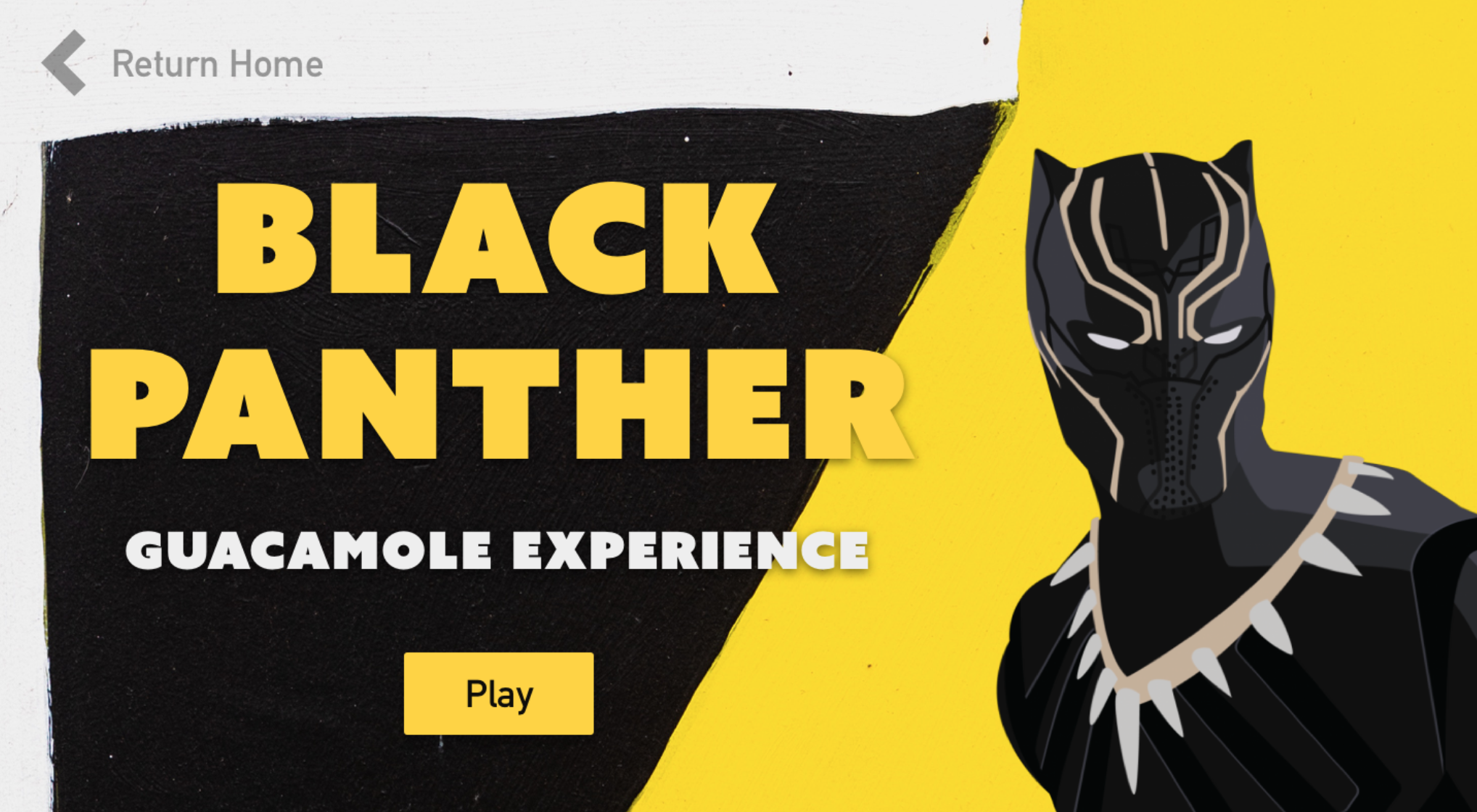immersive taste testing platform
An immersive video experience for middle schoolers to taste and build healthy relationships with food.
Research and Product Design | Design Challenge
Objective
Design a solution for schools to influence their students to eat healthier.
My Role
Research, Idea Validation, UX and Visual Design
Timeline
2 weeks
Tools
Sketch
LucidChart
during those two weeks…
I had my brother’s wedding in Houston, flying to Europe, presenting at CHI 2019 in Glasgow, Scotland, holidaying in London and Paris, and I got sick on my way back to Houston. Because I was traveling every other day, I encountered constraints in time, but with the time that I had, I prioritized being present in each of these moments to enjoy the people, the cultures, and the food. Especially, the food as it proved instrumental to my inspiration and creative process.
formative research methods
What problems exist for schools trying to promote healthy eating?
Secondary Research
While in Glasgow, I read academic papers and attended research presentations at CHI 2019 on Children and Health, reviewed "Action for Healthy Kids" website, and poured into Instagram kid nutrition posts and accounts.
Primary Research
I conducted semi-structured texting interviews due to time zones and schedules (as I was traveling in Europe) with 3 parents and 2 teachers, and observed children at the Glasgow Museum of Science.
formative research insights
1.
Healthy eating is a sociacultural experience to be celebrated.
Andrea Grimes and Richard Harper. 2008. Celebratory technology: new directions for food research in HCI. In Proceedings of the SIGCHI Conference on Human Factors in Computing Systems (CHI '08). ACM, New York, NY, USA, 467-476. DOI: https://doi.org/10.1145/1357054.1357130
2.
Food and drink should not be defined as “bad” or “good,” but rather treated as simply food and drink.
“When you call something ‘bad’ - some kids will be afraid and not eat it. And a lot of kids will want it more.” -Jennifer Anderson, Dietician, MSPH, RD
3.
Kids benefit immensely from interactive, immersive and competitive teacher-led learning activities.
“Interactivity and gamification of lessons are key to engaging students of all ages. It tricks them into learning when it doesn’t feel like it!”-Livia, Middle School Teacher
Charalampos Kyfonidis and Marilyn Lennon. 2019. Making Diabetes Education Interactive: Tangible Educational Toys for Children with Type-1 Diabetes. In Proceedings of the 2019 CHI Conference on Human Factors in Computing Systems (CHI '19). ACM, New York, NY, USA, Paper 441, 12 pages. DOI: https://doi.org/10.1145/3290605.330067
4.
Kids in food deserts often lack access to fresh foods.
“They don’t get a lot of [fresh foods]. Many live in food deserts… basically not many grocery stores where they live - so they come to school with anything that they can buy at a convenience store.”
-Alyce, Middle School Teacher
Charalampos Kyfonidis and Marilyn Lennon. 2019. Making Diabetes Education Interactive: Tangible Educational Toys for Children with Type-1 Diabetes. In Proceedings of the 2019 CHI Conference on Human Factors in Computing Systems (CHI '19). ACM, New York, NY, USA, Paper 441, 12 pages. DOI: https://doi.org/10.1145/3290605.330067
5.
Empathy builds when kids are educated about other students’ food restrictions (allergies, diet lifestyle).
“Because more people know about my allergies. They care to tell their parent not to give me nuts so they can sit next to me if they want.”-Child*
*Vijay Farmah, Kelly Hwu, Derrick Ho, and Whitney Jenich. 2019. Rethinking Food Allergies. Master of Human-Computer Interaction + Design Capstone. University of Washington. Seattle, Washington, USA. P.41.
main stakeholders
assumptive archetypes
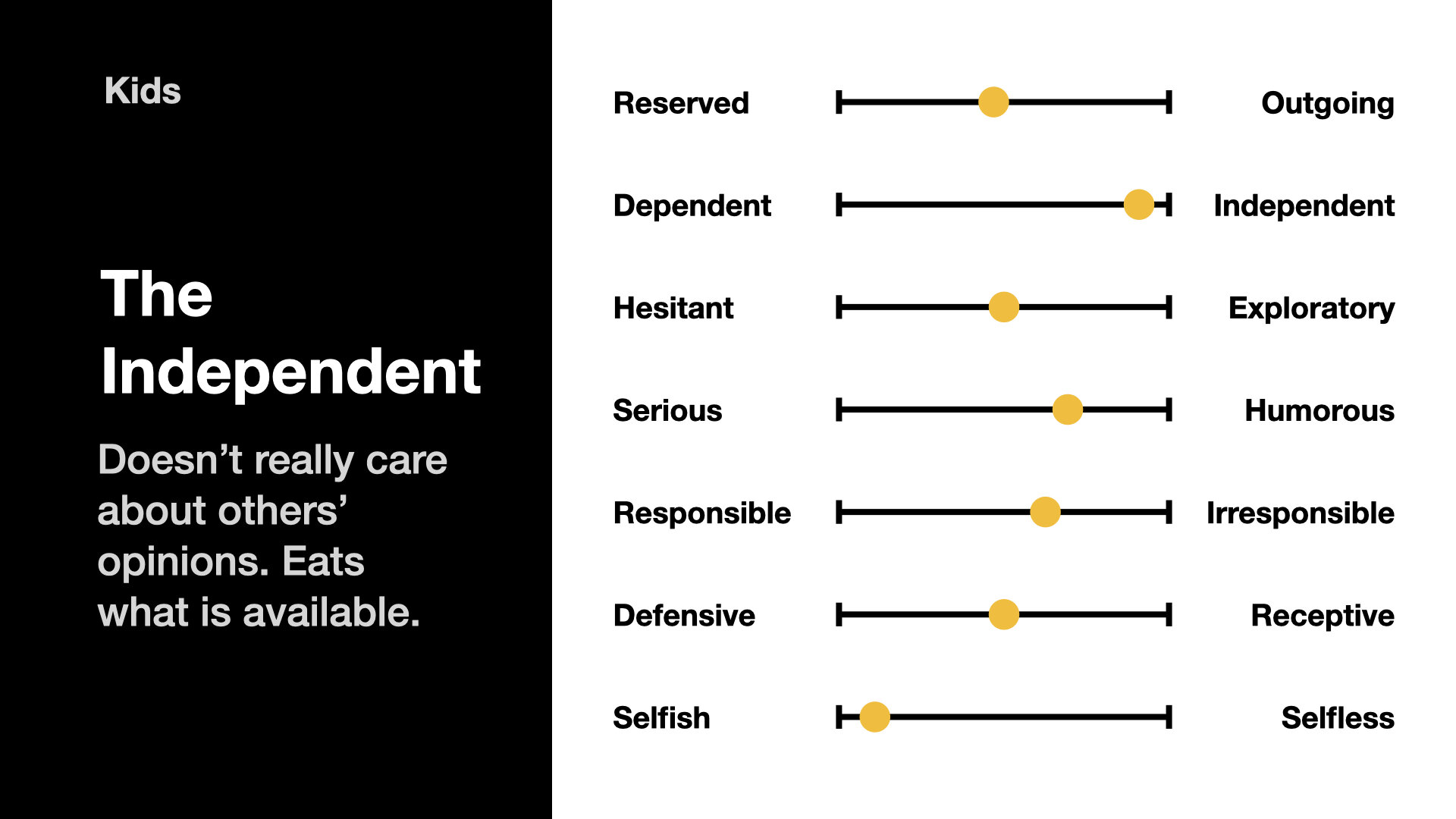
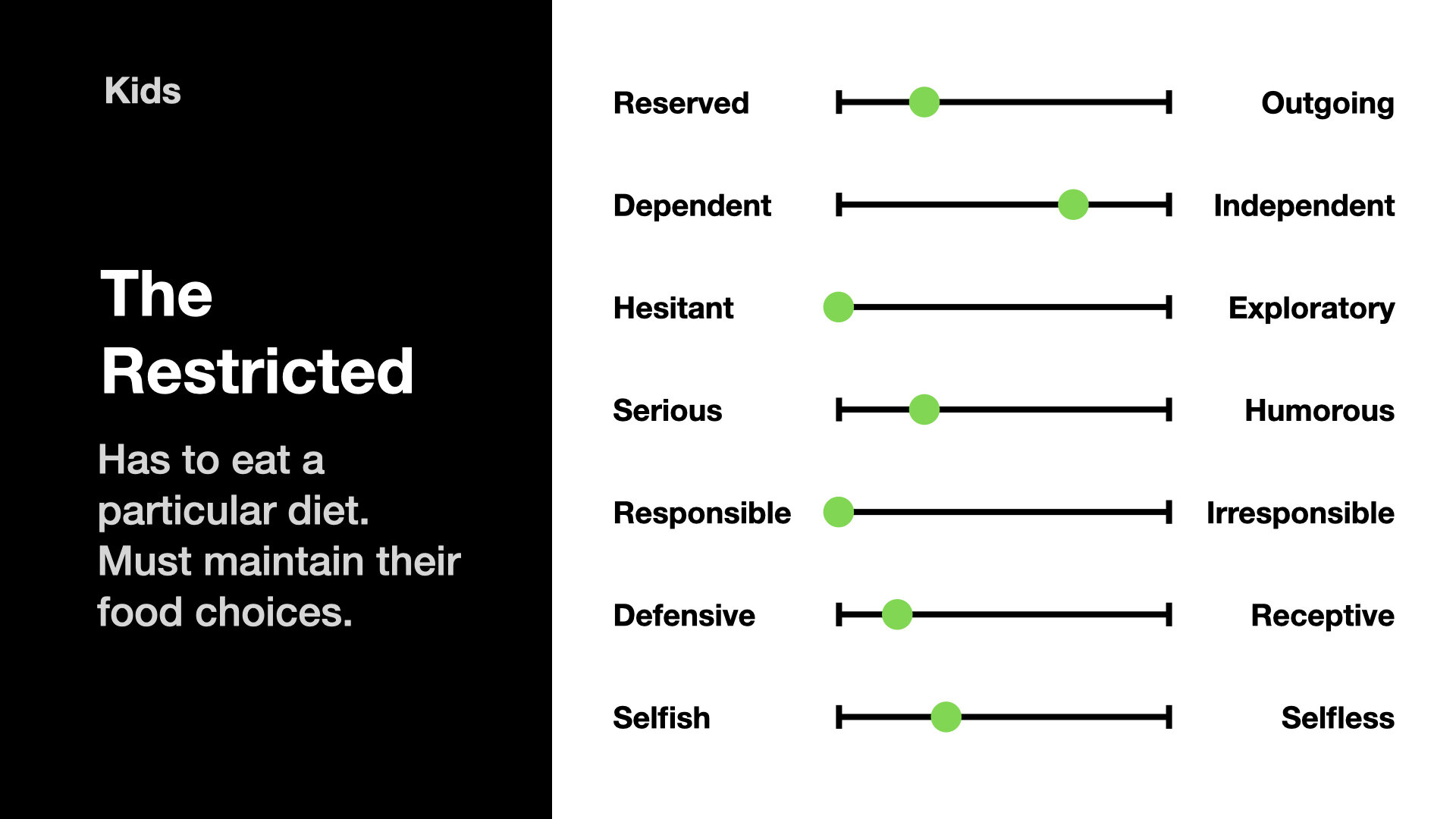
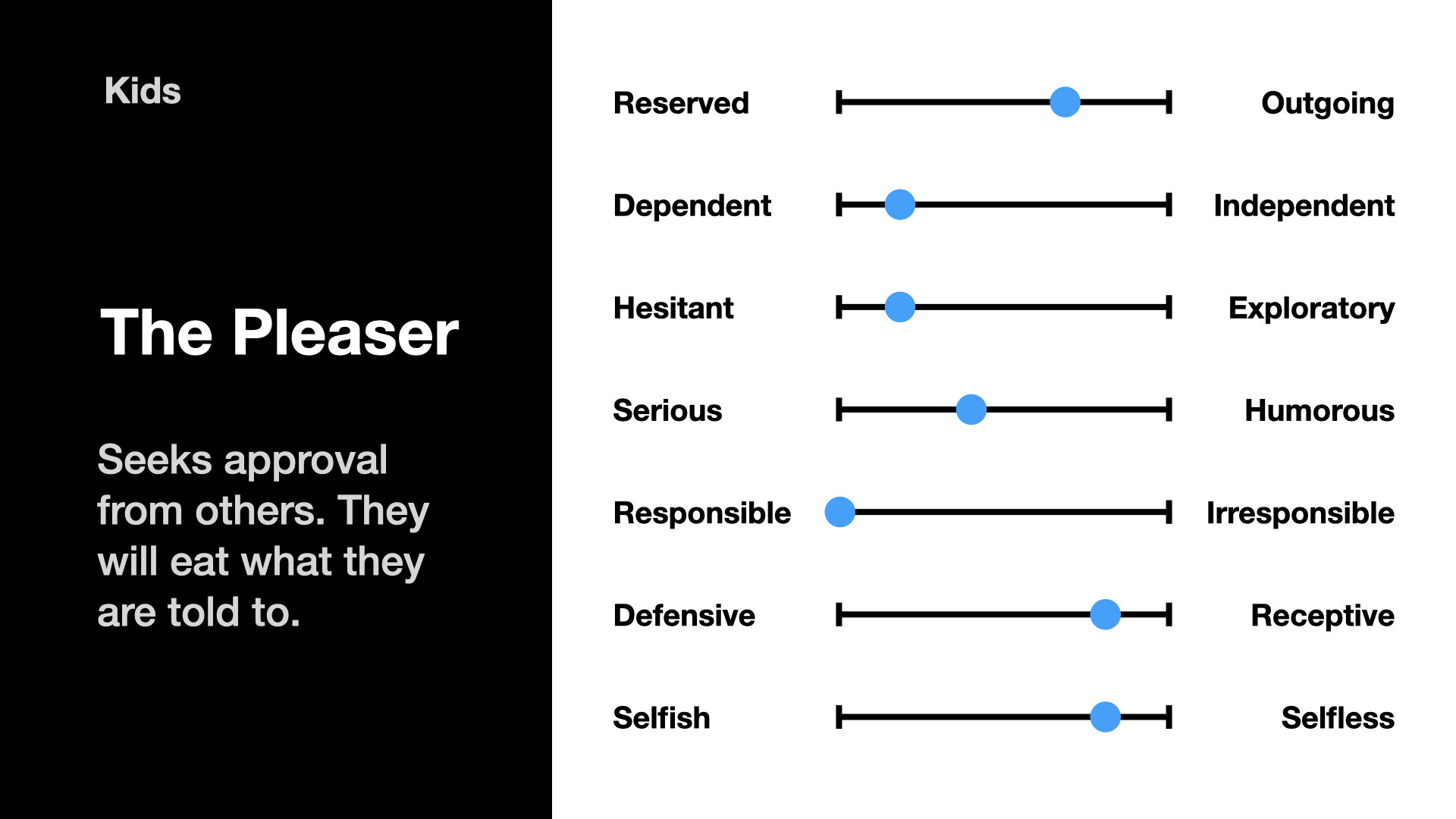
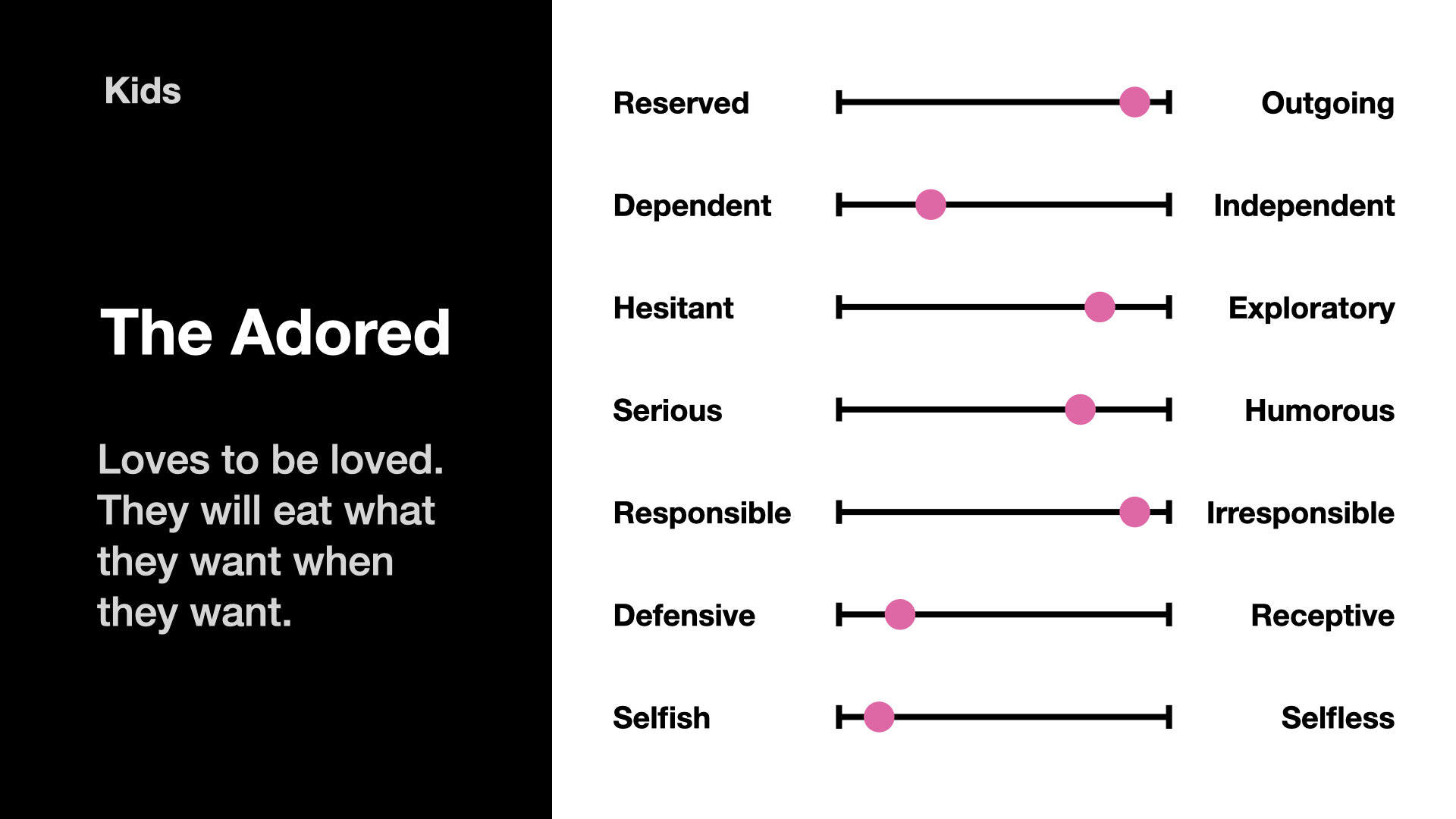
persona and journey
Resulting Design Opportunity
How can middle schools in food deserts introduce and instill healthy relationships with their students and food?
According to American Nutrition Association, food deserts are “parts of the country vapid of fresh fruit, vegetables, and other healthful whole foods, usually found in impoverished areas. This is largely due to a lack of grocery stores, farmers’ markets, and healthy food providers.”
This means children living in these areas don’t have the same access and relationship to fresh and whole foods as other parts of the country.
ideation method
Brainstorming
While on a train to London, I brainstormed many potential solutions before narrowing to three concepts.
the concepts to validate
1.
Taste Test Box
A taste test box featuring a beloved cartoon character/role model (Moana, Black Panther). Similar to a meal subscription service, however provides many already prepped foods like steamed brussels sprouts vs buttered brussels sprouts.
The taste test is led through a guided video experience with a storyline and fun facts about the food being tasted.
2.
Interactive Arduino T-Shirt
A smart shirt embedded with a sensor and a flexible screen of the digestive system.
Plastic fruits, vegetables, drinks and more also have sensors attached so they can be scanned by the shirt. When a specific food is scanned, the screen will play the body’s interaction so students learn how different foods affect the body in a speed up process.
3.
Competitive Plate Making Game
A game were students are divided into two teams. Each team must successfully make a well balanced plate from different social settings (birthdays, lunch, thanksgiving, dinner) and with different characters (kids with allergies, athletes, diabetics, inactive).
Points are rewarded based on how healthy their plates are (food pyramid and character’s diet) and did they enjoy themselves (cupcake at birthday gives points).
taste test box wins the concept validation
I emailed the concepts to parents and teachers and getting their feedback based on their personal experiences and asking kids their thoughts. Their responses were strongly towards the first concept because it:
Celebrates the sociocultural aspects of food
Acknowledges food as food
Engaging experience
Brings food to food deserts
Raises awareness on different lifestyles (allergies, vegan, etc.)
additional validation insights
Teaches what it means to be healthy with actual food.
“I think kids would enjoy providing their own feedback on what they like/don’t like versus simply trying to choose what’s healthy and what’s not.” -Alan, Father of Two Girls
Provides an immersive and rememberable learning experience.
“My kids said they would love taste testing!! Anything they can actually do that’s real, they’ll remember.”-Alyce, Middle School Teacher
design inspiration
I explored interactive media experiences like “You Vs Wild,” an interactive Netflix show and the “Rugrats: Go Wild” movie with a scratch and sniff, and video streaming user experiences like Netflix, YouTube, Amazon Prime and Vimeo.
low-fidelity wireframe flow
Moving forward in Paris, I designed a flow for “Black Panther’s Guacamole Adventure” thinking, Yeah, middle schoolers like that.
1. Start Page
Teacher loads up video-taste testing experience.
2. Introduction of Character and Tasting Items
Black Panther shares out how they'll be making his famous guacamole for his sister Shuri’s birthday party.
3. Bird Eye Shot of Tasting Item
As Black Panther goes through the recipe, he shares facts and history on the tomato.
4. Tasting Item Being Prepped
More facts, history and stories on the tomato is shared.
5. Tasting Time with Reflection Questions
During this time, the students will taste the tomatoe and the teacher will have questions to ask.
6. Repeat with all ingredients
Working through the receipe list, Black Panther teaches the students about the ingredients and the student taste and talk about them.
7. Bird Eye Shot of Combining Them All Together
Black Panther and the students mix to make their guacamole.
8. Taste the Guacamole
Students taste and the teacher asks "What do you think about all the flavors in one bite?"
9. End with Party Scene
Everyone enjoys the guacamole!
design adjustments
I sent the wireframes to two food desert middle school teachers for feedback. But didn’t get a response so I had to make some educated decisions.
I reviewed my insights and realized how important it was for the activity to teacher-led, and I currently had the wireframe lead on its own. I also remembered observing the kids at the museum, and watching run amuck without a teacher, and not truly understanding the science.
Taking that insight, I fine-tuned the video experience so the teacher is more active in this flow as I recovered in bed with a fever back in Houston.
user flows
student flow
Most of their flow is spent in the video flow, this means the video flow is the most critical. Because the teacher is apart of the video flow, the experience is impacted by the teacher’s attitude and behavior.
teacher flow
While the students will simply engage with video portion, teachers will have more to do in preparing the immersive experience ahead of time. During the taste testing section, the teacher is in charge of leading the students in discussion and transitioning them back to the video.
Final flow
I adjusted the wireframe accordingly so the teacher could lead the taste test then redirect their attention to the video. Which all has led to…
lessons learned
Who and what I had access to influenced my design heavily
Timelines impacted decision-making
Designing solo can bring unchecked bias
Try not to vacation during a deadline
























